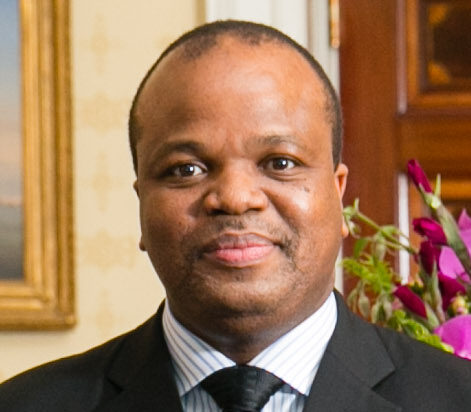
King Mswati III of Eswatini, also known as Ngwenyama (“lion”), was born on April 19, 1968, in Manzini, Eswatini (formerly known as Swaziland). He is the eldest son of King Sobhuza II and his mother is Queen Ntombi. He has more than 30 siblings.
Mswati III was crowned King of Eswatini on April 25, 1986, at the age of 18, after the death of his father. He is one of the last absolute monarchs in the world, meaning that he has complete authority over the government and the people of Eswatini.
The King is known for his lavish lifestyle and vast wealth. According to Forbes magazine, he has an estimated net worth of $200 million, making him one of the richest monarchs in the world.
Mswati III’s wealth comes from several sources. The King has substantial ownership in many businesses in Eswatini, including sugar, timber, and mining companies. He also has a stake in MTN Eswatini, the country’s largest mobile phone operator. In addition, he receives a yearly allowance from the government.
The King is also known for his extravagant spending. He has built several palaces, including the Lozitha Palace and the Buhleni Palace, which are both located outside the capital city of Mbabane. He also owns a fleet of luxury cars and a private jet.
Despite his vast wealth, many people in Eswatini live in poverty. The country has one of the highest HIV/AIDS rates in the world and unemployment is high. There have been protests against the King and his government in recent years, with people calling for democracy and economic reform.
In conclusion, King Mswati III of Eswatini is one of the wealthiest monarchs in the world, with a net worth of $200 million. His wealth comes from his ownership in many businesses in Eswatini, as well as a yearly allowance from the government. Despite his wealth, many people in Eswatini live in poverty, leading to protests against the King and his government.
Here is a timeline of King Mswati III of Eswatini’s life:
- 1968: King Mswati III is born on April 19 in Manzini, Eswatini.
- 1986: King Mswati III is crowned King of Eswatini on April 25 at the age of 18 after the death of his father, King Sobhuza II.
- 1987: King Mswati III enacts a new constitution that consolidates his power as an absolute monarch.
- 1988: The King marries his first wife, Inkhosikati LaMatsebula.
- 1992: The King marries his second wife, Inkhosikati LaMbikiza.
- 1995: The King marries his third wife, Inkhosikati LaNgangaza.
- 2000: The King marries his fourth wife, Inkhosikati LaMagwaza.
- 2002: The King renames the country from Swaziland to Eswatini, which means “land of the Swazis.”
- 2005: The King purchases a private jet for $17 million.
- 2018: Protests erupt in Eswatini calling for democratic reforms and economic justice, with many targeting the King’s lavish lifestyle.
- 2021: The King faces criticism for his handling of the COVID-19 pandemic in Eswatini, including allegations of misusing public funds.
This timeline highlights some of the key events in King Mswati III of Eswatini’s life, including his coronation, marriages, and controversies surrounding his absolute rule and lavish lifestyle.
5 interesting facts about King Mswati III of Eswatini:
- He is one of the last absolute monarchs in the world.
- He has over 30 wives, making him one of the most polygamous monarchs in history.
- He is known for his extravagant spending and lavish lifestyle, including a personal fortune estimated at $200 million.
- He has been criticized for his lack of political reforms and suppression of opposition parties and movements.
- Despite his wealth, his country is plagued by poverty and high rates of HIV/AIDS.
5 quotes from King Mswati III of Eswatini:
- “We respect our culture and traditions, but we also embrace modernity.”
- “We are a peaceful country, and we want to remain so. We value our stability and security.”
- “As a leader, it is my duty to ensure that our country remains strong and prosperous for future generations.”
- “We may be a small country, but we have a big heart and a strong spirit.”
- “I believe in the power of education and the importance of investing in our youth. They are the future of our nation.”









